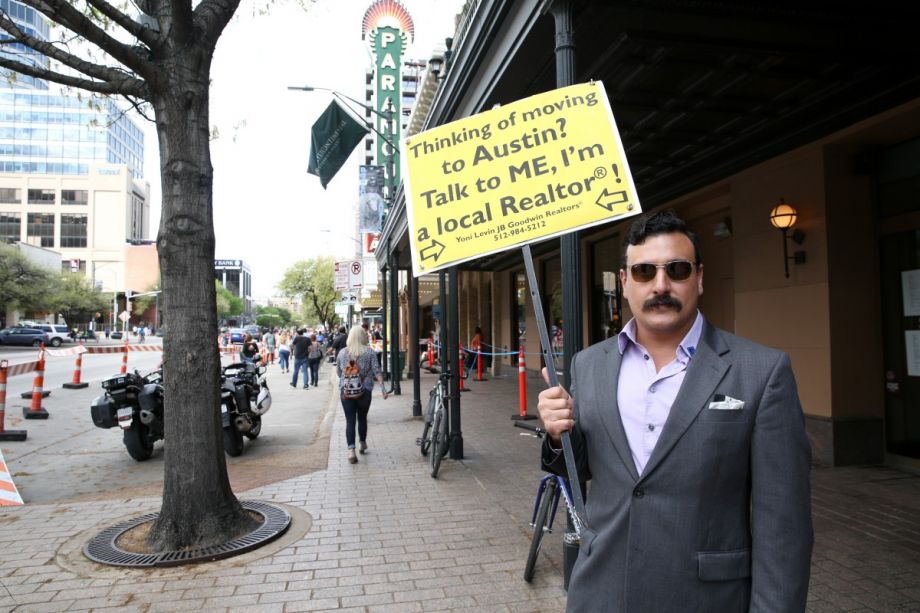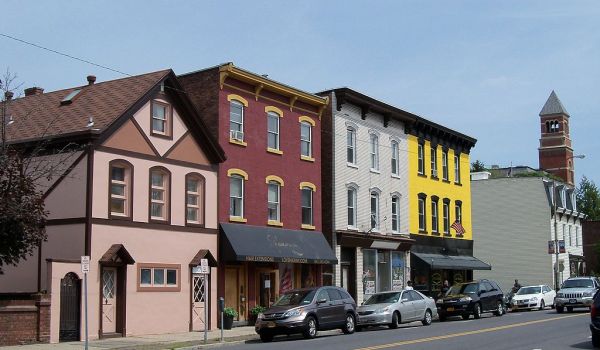Lawmakers and advocates in Austin are trying to seize on the groundswell of support for affordable housing after voters approved a record-setting $250 million housing bond last fall, and to Nora Linares-Moeller, executive director of HousingWorks Austin, it appears to be working.
“Things are changing rapidly in a good way, in our opinion, because the affordability issue has become such a prominent, important discussion in our community,” Linares-Moeller says. “Years ago [housing advocates] all knew there was an issue we had to deal with … Now there are so many more people talking about that. It’s not just the housing advocates that are concerned — it’s really large industries and developers. Everybody’s paying attention in a different but good way.”
Now Austin Councilmember Gregorio Casar, who had joined a coalition of advocates pushing to expand the scope of the housing bond offered last year, is looking to squeeze more units out of subsidized housing projects with a proposal called “Affordability Unlocked.” The proposal, which Casar introduced to his colleagues last week, leans on a strategy of waiving many of the city’s own land-use regulations — including height and density restrictions, ‘compatibility’ with neighboring buildings, setback requirements, parking minimums — to maximize the impact of its housing investments.
The program would primarily apply to income-restricted projects that use Low-Income Housing Tax Credits or other subsidies, including proceeds from the recent local housing bond. To qualify for the waivers, rental projects would have to lease at least half of their units at rates that are affordable to tenants earning no more than 60 percent of Median Family Income — $36,120 for an individual or $51,600 for a four-person household. Additionally, at least a quarter of the units would need to have two or more bedrooms. Landlords would be required to provide a “just cause” prior to evicting tenants, and allow tenants to organize.
“In order to make sure that those bond dollars help as many families as possible, we need to change our city policies and make sure that unnecessary restrictions on affordable housing don’t result in our housing bond dollars helping fewer families,” Casar says. “We’ve seen time and time again as we dedicate city dollars to affordable housing projects how our own rules get in the way.”
For example, Casar pointed out in a resolution introducing the proposal, land-use regulations limited the impact of a recent affordable housing project in Austin that used Low-Income Housing Tax Credits and $1.5 million in local subsidy from a previous housing bond. If parking and compatibility requirements had been waived, the project could have been 50 percent bigger — 90 units instead of 60, according to the resolution. Waiving those regulations and permitting extra density would allow affordable-housing developers to compete with market-rate developers for more valuable land, Casar sais. It could also expand the use of Low-Income Housing Tax Credits for income-restricted projects.
“Programs that provide less subsidy oftentimes go into large greenfields on the edge of the city because there isn’t enough subsidy to drive them inward,” Casar says. “And part of the hope for Austin is to use both the bond and Affordability Unlocked to drive some of these 4 percent tax credit projects closer into the city and closer to transit.”
The proposal is notable for targeting subsidized, income-restricted housing rather than simply trying to entice market-rate developers to build reduced-rent units, as many cities have sought to do. Mandatory inclusionary zoning is illegal in Texas, which has forced cities like Austin to think of other ways to promote affordable housing at the local level. New research suggests that upzoning land is not the silver bullet for affordability that many advocates have portrayed it as being. But by reducing the restrictions on affordable development relative to market-rate, Casar is hoping the city’s housing investments will produce more units at lower rents than they otherwise would.
Housing advocates, many of whom met with Casar as he was developing the proposal, say it’s a promising set of policies.
“A big part of what I hear is that the limitations or compatibility restrictions, based on what you’re building next to, keeps down the amount of units you can get,” says Nicole Joslin, chair of the Austin Housing Coalition, a consortium of affordable-housing developers. “I hear a lot from people that parking requirements that are over what they would naturally need to provide for the community can take up a lot of cost and space in that development.”
And some elements of the proposal, like eliminating parking requirements for certain projects, would serve other planning goals as well.
“We’re already talking about how we stop mandating the overbuild of parking as part of our larger zoning rewrite … I think that affordable housing is just one of the many goals that get hurt when we require too much parking.” Casar says.
The proposal also comes as the city is hitting the reset button on a planned overhaul of its Land Development Code. By last summer, according to a report in the Austin American-Statesman, the CodeNext project, which had launched in 2012, had become so divisive and bogged down by so many delays that the city council voted to end it altogether. At the same time, the council directed the city manager to develop a new process to accomplish many of the same zoning reform goals. That process has yet to be announced. City Manager Spencer Cronk wasn’t available for an interview last week.
The city council will take up the proposal on February 21st. If it approves the concept, Casar said, the city manager will draft legislation to implement the proposal, which could go up for a final vote in May.
This article is part of Backyard, a newsletter exploring scalable solutions to make housing fairer, more affordable and more environmentally sustainable. Subscribe to our weekly Backyard newsletter.

Jared Brey is Next City's housing correspondent, based in Philadelphia. He is a former staff writer at Philadelphia magazine and PlanPhilly, and his work has appeared in Columbia Journalism Review, Landscape Architecture Magazine, U.S. News & World Report, Philadelphia Weekly, and other publications.
Follow Jared .(JavaScript must be enabled to view this email address)


















